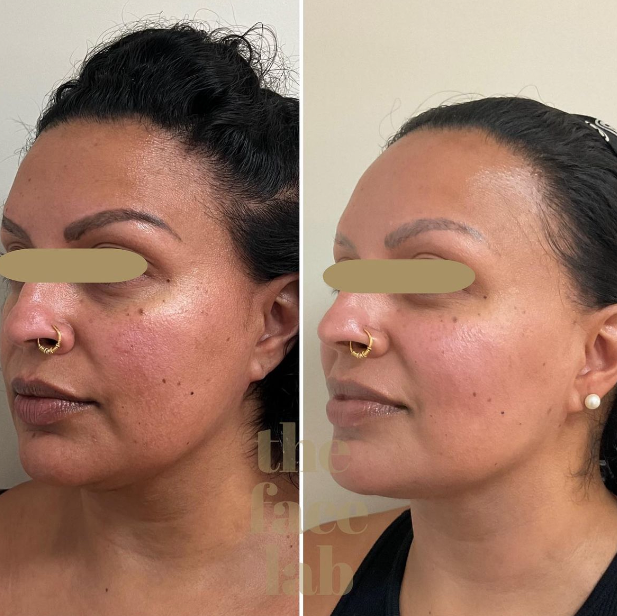Understanding and Treating Sagging Skin: Comprehensive Solutions for Skin Laxity
Are you struggling with sagging skin and skin laxity? Whether it's due to aging, weight loss, or other factors, sagging skin can be a common concern that affects your confidence. In this Lab Note, we'll explore "what is skin laxity," "what causes sagging skin," and effective treatment options including Sculptra, Radiesse, skin tightening, skin lifting, Botox, and dermal fillers. We'll also touch on holistic approaches to improve skin laxity. If you're searching for solutions in Toronto, read on to discover how you can achieve firmer, more youthful skin.
What is Skin Laxity?
Skin laxity refers to the loss of skin firmness and elasticity, leading to sagging and drooping. This condition is often a result of the breakdown of collagen and elastin fibers, which are essential for maintaining skin structure and resilience.
What Causes Sagging Skin?
Several factors contribute to sagging skin, including:
Aging: Natural aging processes decrease collagen and elastin production, leading to less firm skin.
Weight Loss: Rapid weight loss can result in excess skin that lacks elasticity, often seen as "sagging skin after weight loss."
Sun Exposure: UV radiation breaks down collagen and elastin fibers, accelerating skin aging and sagging.
Lifestyle Factors: Poor diet, smoking, and lack of exercise can negatively affect skin health and elasticity.
Common Areas of Sagging Skin
Sagging Skin on Face:
Aging and sun damage often lead to sagging skin around the cheeks, jawline, and eyes.
Sagging Skin on Neck: The neck is particularly susceptible to skin laxity due to its thinner skin and frequent movement.
Sagging Skin on Arms: Known as "bat wings," sagging skin on the upper arms can result from weight loss or aging.
Sagging Skin Under Chin: Often referred to as a "double chin," this area is prone to skin laxity and fat accumulation.
Treatment Options for Sagging Skin
1. Sculptra
Sculptra is an injectable treatment that stimulates collagen production, offering gradual and natural-looking results. It's effective for restoring volume and firmness in areas like the face, neck, and under the chin.
2. Radiesse
Radiesse is a dermal filler that not only provides immediate volume but also stimulates collagen production over time. It's commonly used for sagging skin on the face and hands.
3. Skin Tightening Treatments
Non-invasive skin tightening procedures, such as radiofrequency and ultrasound, use energy to heat the deeper layers of the skin, stimulating collagen production and tightening the skin.
4. Plastic Surgery for Lifting
For more severe sagging, surgical options like facelifts, neck lifts, and arm lifts can provide dramatic and long-lasting results.
5. Botox
While Botox is primarily known for reducing wrinkles, it can also be used in combination with other treatments to improve the appearance of sagging skin by relaxing the muscles that pull the skin down.
6. Dermal Fillers
Dermal fillers like Juvederm and Restylane can be used to add volume and lift sagging skin, particularly on the face and neck.
Holistic Options for Skin Laxity
In addition to medical treatments, holistic approaches can help improve skin laxity:
Healthy Diet:
Consuming foods rich in vitamins, minerals, and antioxidants can support skin health and collagen production.
Regular Exercise: Exercise improves blood circulation, which can help maintain skin elasticity.
Skincare Routine: Using products with ingredients like retinoids, peptides, and hyaluronic acid can enhance skin firmness and hydration.
Hydration: Drinking plenty of water helps maintain skin elasticity and overall health.
FAQs About Sagging Skin
1. Can sagging skin be prevented?
- While aging and genetics play a role, maintaining a healthy lifestyle, protecting your skin from the sun, and using skincare products can help delay the onset of sagging skin.
2. Is there a non-surgical way to tighten skin?
- Yes, non-invasive treatments like radiofrequency, ultrasound, skin resurfacing, microneedling, and laser therapies can tighten skin without surgery.
3. How long do results from dermal fillers last?
Results from dermal fillers can last from six months to two years, depending on the type of filler used and the area treated.
Choosing the Right Clinic in Toronto
When seeking treatment for sagging skin in Toronto, it's essential to choose a reputable clinic with experienced practitioners. The Face Lab offers a range of customized treatments, from
Sculptra and Radiesse to holistic skincare solutions. It is important to understand that in cases of moderate to severe sagging surgical options may provide the best outcomes. Therefore, realistic expectations on the limitations of in-clinic treatments is essential.






Quick Links
Contact Info
By Appointment Only
Follow Us
Work With Us




